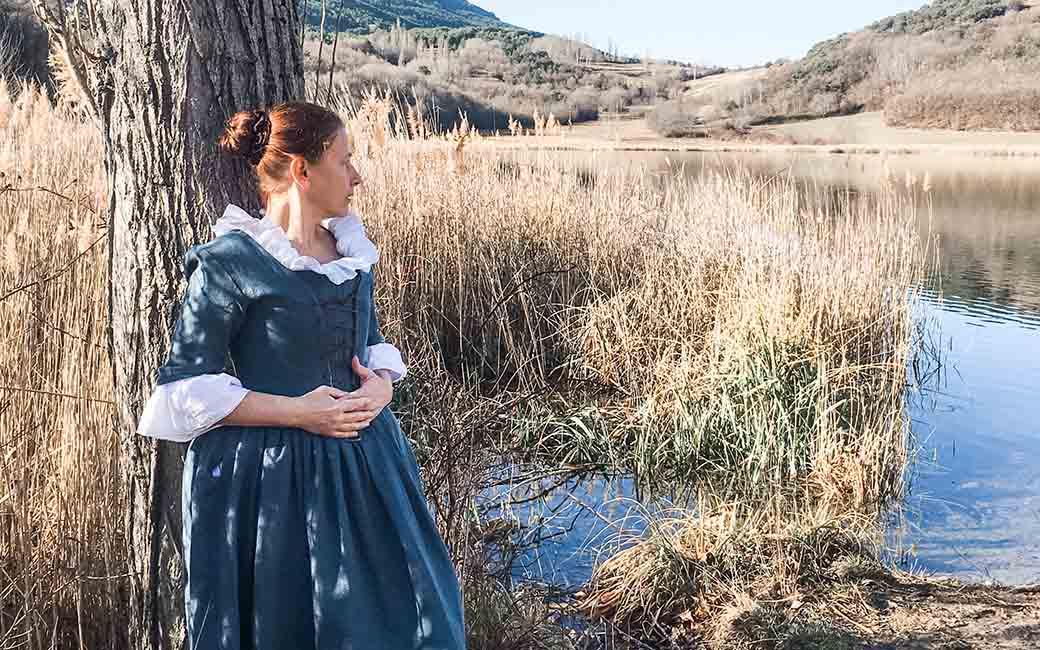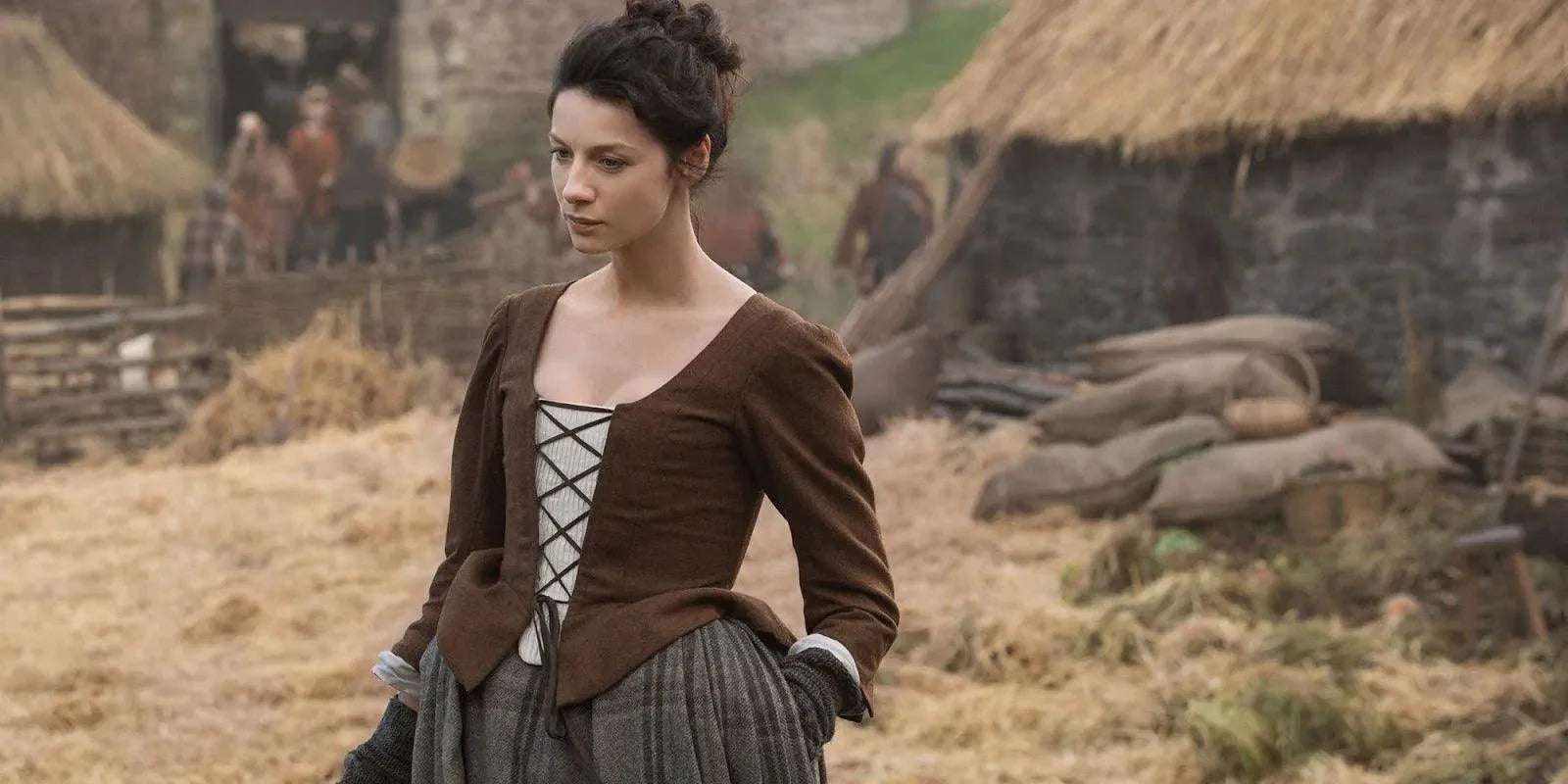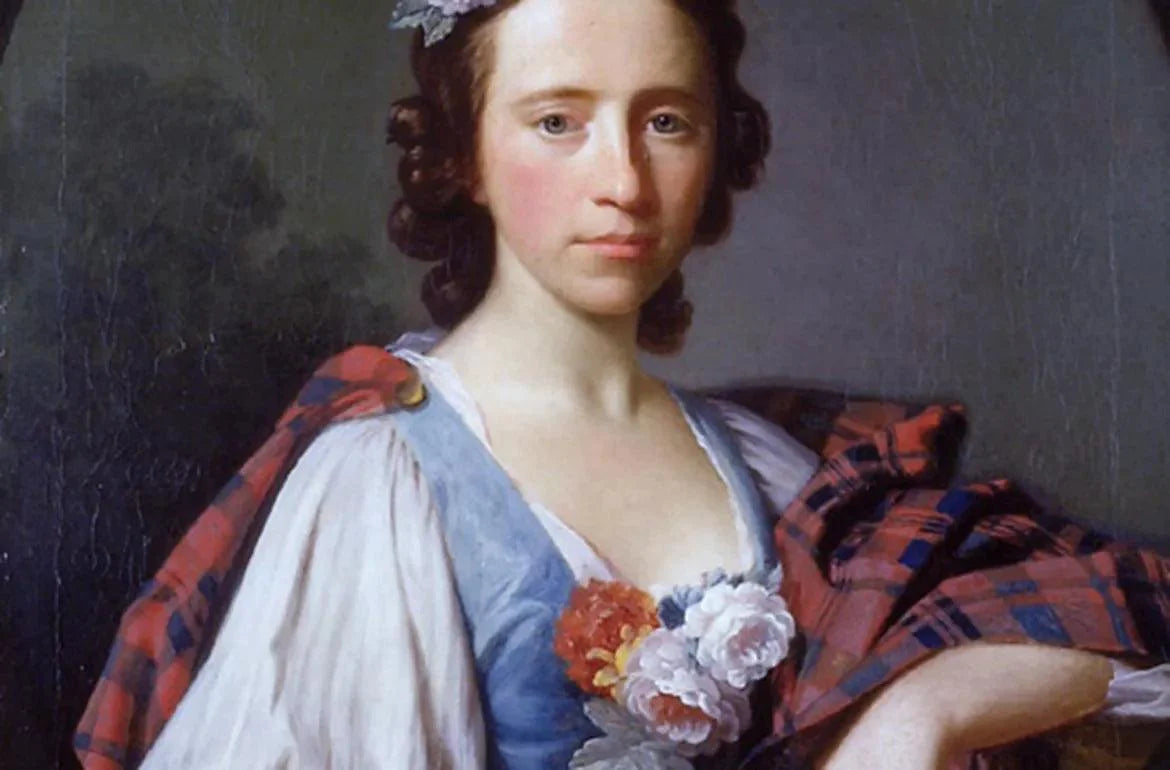The Precious Nature of Clothing Before Industry

DORINE, Historical Costume in Steel Blue Linen
Before the Industrial Revolution and mass production changed the apparel landscape, clothing was an extraordinarily precious commodity. With all garments handmade using manual tools and techniques, even simple dresses required an immense investment of time and skill to produce.
This made clothing incredibly expensive and well outside the budget of average citizens. Only the wealthy could afford more than a handful of outfits. Even minor damage to a garment required expert mending and patching to preserve its utility.
As a result, families carefully maintained the clothing they owned and passed down prized pieces across generations. Garments stayed within families for decades, adapted over time to fit the changing measurements of mothers, daughters, and granddaughters.
Versatile Designs
This enabled families to amortize the value of fine clothing over many years. The long lifespan and multi-generational use of early clothing also necessitated versatile designs.
Garments incorporated lacing, ties, adjustable waistlines and other features to accommodate the natural fluctuations of a woman's body as she aged and bore children. This ensured each piece continued serving its owner usefully across her lifetime and enabled future heirs to tailor handed-down clothes to their own bodies.
In these ways, before the conveniences of modern mass production, clothing was a rare treasure to preserve and adapt as long as possible. What people owned, they truly valued.
The Lace-Up Bodice as Corset

DORINE, Historical Costume in Night Blue & Steel Blue Linen
Peasant women's costumes in the 18th century often featured lace-up bodices that served multiple purposes. Most notably, these jackets functioned similarly to corsets in providing shape and support to the upper body.
The front lacing allowed the fit to be tightened or loosened as needed, accommodating changes to a woman's body shape over time. Unlike modern corsets that constrict the waist and ribs, 18th century lace-up bodices created shape through sturdy boning and strategically placed seaming.
By cinching the lacing, a woman could achieve the fashionable silhouettes of the era, lifting the bust and gathering at the waist. The structured panels molded the torso into the desired cone or inverted triangle shape. For peasant women who could not afford tailored corsets, the lace-up bodice provided a versatile garment for support and styling.
As fashions changed from decade to decade, bodices could be updated with new lacing patterns or seam lines without requiring entirely new wardrobes. Proper fit and support could continue as women aged, their figures matured, and they went through childbirth. For rural women required to work and move, jackets provided more flexibility than constricting aristocratic corsets. The lace-up peasant jacket offered form, function and adjustable shape all in one essential garment.
The Two-Panel Skirt for Adjustability

DORINE, Historical Costume in Night Blue & Steel Blue Linen
The long skirts of 18th century peasant costumes were ingeniously designed with two fabric panels to allow for width adjustments at the waist as needed. This two-panel construction accommodated pregnancy and post-pregnancy shape changes, as well as normal weight fluctuations throughout a woman's life.
Lacing ties or ribbons were incorporated into the side seams of the skirt at the waist level. By loosening or tightening these ties, a woman could expand or cinch in the overall width of the skirt as desired. This created a self-adjusting garment that could adapt to the natural evolutions of a woman's body across time.
Whether six months pregnant or thirty pounds heavier, the versatile two-panel peasant skirt allowed rural women to continue wearing the same skirt for years - or even decades - simply by adjusting the waist width as needed. This practical design provided flexibility, comfort, and longevity.
After childbirth, the skirt could be cinched back in to fit the post-partum body. As women aged and changed shape, whether slimming or widening, the adjustability ensured a custom fit unique to their current measurements. The two panels of fabric and integrated lacing system created a skirt primed for easy size modifications at the waistline. This versatile approach perfectly suited the natural bodily changes of any peasant woman's life stages and transitions.
Linen peasant costumes
Linen was the most common fabric used for peasant clothing in the 18th century. It was durable, breathable, and helped cope with both hot summers and cold winters.
Women's linen peasant suits consisted of several parts. A blouse or chemise would be worn under a front-lacing bodice. A full linen skirt completed the costume, typically falling just below the calves. Linen peasant skirts were wide and pleated to allow for easy movement during farm work.

DORINE, Historical Costume in Night Blue & Steel Blue Linen
The natural breathability of linen helped cope with sweat during long days of manual labor. Its durability meant suits could withstand years of wear and mending. And linen provided protection from both sun and bracing winds. For peasant women, a practical linen costume was an essential part of daily farm life. The style remained largely consistent over the decades, with linen enduring as the fundamental peasant fabric before the changes of industry.
Lace-Up Bodices in Detail
The lace-up bodice was an essential element of European peasant women's costumes in the 18th century. This fitted bodice provided shaping and structure to the upper body. Lace-up jackets were typically constructed of heavyweight linen or wool fabric. The front panels were stiffened with dense interfacing to maintain the bodice's shape.
The front opening featured grommeted eyelets laced snugly together from top to bottom. The adjustable lacing allowed for precise shaping and support of the bust and waist. By loosening or tightening the criss-crossed front laces, the wearer could adapt the fit of the bodice to accommodate changes to her figure over time.

DORINE, Lace-Up Bodice in Night Blue Linen
The lacing also provided back support similar to a modern corset. Peasant women relied on the sturdy yet flexible lace-up jacket bodices to comfortably carry out their daily labors. The lacing design brought functionality and versatility to this traditional garment.
The lace-up jacket bodice was fundamental to the 18th century European peasant woman's wardrobe. Its adaptable structure and form-fitting design conferred both beauty and practicality. The signature criss-crossed lacing exemplified the rustic charm and ingenuity of traditional rural clothing.
The Stomacher
The stomacher was a prominent feature of many 18th century European women's outfits, especially among the peasant class. A stomacher is a decorative triangular piece that fills in the front opening of a woman’s gown or jacket. While utilitarian in nature, the stomacher was also an opportunity to add embellishment and beauty to an outfit.

Portrait Of A Lady - Alexander Roslin (National Museum)
The stomacher served the practical purpose of shaping the bodice of the gown and providing structural support. Typically made of stiffened fabric or whalebone, the stomacher would be laced to the front of the bodice to maintain the smooth flat front that was fashionable in that era. It helped create the hourglass silhouette popular at the time.
For peasant women, the stomacher added both function and beauty to their simple gowns and jackets. It gave them a chance to personalize their outfits and take pride in their appearance even with limited resources. While serving a practical purpose, the ornamental stomacher brought artisan embellishments and creativity to 18th century peasant fashions.
Long Skirts
The long skirts worn by 18th century peasant women reached all the way to the ground, with lengths ranging from ankle to floor-length. These lengthy skirts provided extensive coverage and modesty, aligning with traditional values of the era.

HELOISE, Historical Skirt in Dark Green Linen
Yet the extra fabric could prove cumbersome for peasants engaged in manual labor and farm work. To enhance manageability, long skirts incorporated pleats and gathering at the waist to provide fullness while avoiding excess fabric that could tangle around the legs and feet.
Peasant skirts frequently included multiple layers, with contrasting fabrics providing depth and texture. A common combination involved a simple, durable linen skirt as an underlayer topped by a woolen overskirt in a dark hue. Patterned cottons offered affordable decoration for special occasions. Though lacking embellishment, the fabrics and layered construction of long peasant skirts allowed for beauty and individual expression.
The Allure and Symbolism of the Color Blue

DORINE, Historical Costume in Night Blue & Steel Blue Linen
Blue is a color that evokes a sense of tranquility, calmness, and serenity. It represents wisdom, trust, loyalty and confidence. The cool tones of blue feel comforting and soothing. It's no wonder I chose this gorgeous shade for my very first DORINE costume I made years ago.
Emotional Blue
The midnight blue and steel blue hues chosen have an elegant, timeless beauty about them. They remind one of the vast night sky or a deep body of water, mysterious yet peaceful. Blue also symbolizes nostalgia and sentimentality, perhaps a longing for the olden days when clothing was cherished and cared for over generations.
The blue peasant costume evokes all these wonderful qualities and emotions. It's a color linked deeply to human heritage and nature. When visualizing a strong, steadfast woman dressed in this flowing blue costume, it feels absolutely fitting for the time period. The blue seems to represent fortitude - weathering the ups and downs of life with grace. At the same time, it provides a feminine, romantic vibe.
Daily Life in Peasant Costumes
Peasant women in the 18th century lived humble but busy lives. Their daily routines involved numerous household chores and activities necessary for survival. The precious costumes they inherited helped them perform their daily work.
A typical day started early, with women dressing in their linen or woolen dresses. The lace-up bodices provided support while bending and lifting. The full skirts allowed freedom of movement while doing chores. Sturdy leather shoes protected their feet.
Their attire needed to be functional, as peasants worked hard tilling fields, tending animals, cooking, cleaning, spinning yarn, mending clothes, and more. A woman's costume facilitated her never-ending work. At day's end, women carefully removed their valued costumes. They lovingly brushed out dirt, mended tears, and washed stains.
Keeping the treasured dresses clean and intact took constant effort. Mothers passed skills and thriftiness to daughters, teaching them to preserve and repair these essential garments. Peasant costumes endured years of wear due to meticulous mending and care. The styles lived on through generations as treasured heirlooms.
The Peasant Costume Legacy

DORINE, Historical Costume in Steel Blue Linen
Peasant costumes held an important legacy for rural families. Clothing was precious, expensive, and passed down for generations. A daughter would inherit her mother's or grandmother's dress, adjusting it to fit with lacing and panels.
This created a heritage of shared style and practicality. Daughters learned to sew and mend from their mothers to care for these treasured garments. They became experts at alteration and thrift, making small pieces of fabric last for decades.
Though fashions changed over time, core elements remained, like full skirts, fitted bodices, aprons, and headscarves. The peasant costume influenced haute couture and modern fashion trends. Designers found inspiration in the timeless silhouettes, earthy fabrics, handcrafted embellishments, and versatility of peasant dress. Quilted jackets, full midi skirts, off-the-shoulder tops, and lace-up boots reflect this rustic heritage today. Though far removed from daily farm life, touches of the peasant aesthetic remind us of generations past.



